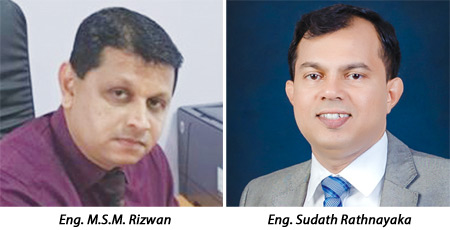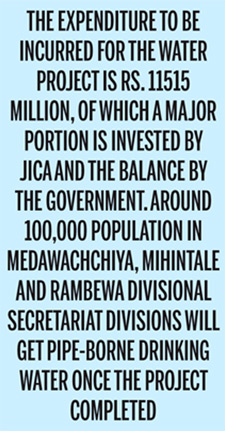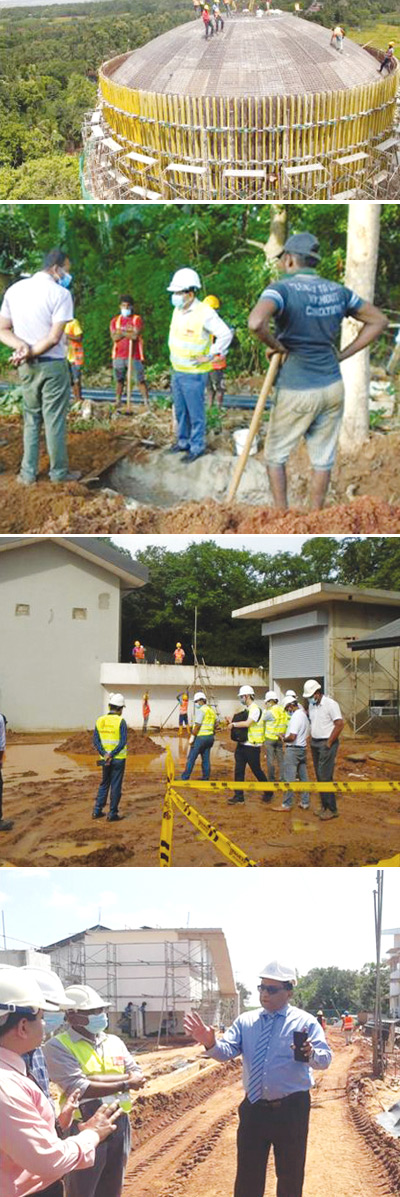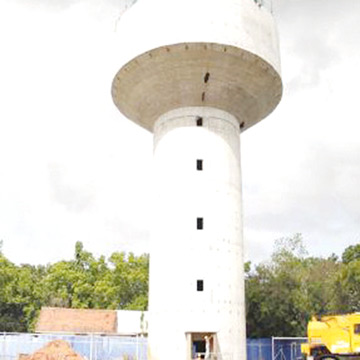
Water has no substitute. It is the most precious and invaluable vital resource for the existence of all living beings in the planet. In Sri Lanka, nature has endowed us with more than enough water resources, including 103 major rivers apart from 40,000 tank systems and thousands of other mini water sources.

 The irrigation industry indigenous to Sri Lanka and being passed down from generation to generation from the time of our great kings is highly visible in the social, economic and cultural aspects of the country. According to irrigation work continuing to date from the fifth century B.C, the country can store 4,000 million cubic metres of water in 75 major to 167 medium tanks of the Irrigation Department. Another 3,200 million cubic metres of water can be stored in the reservoirs constructed in the present era under the Mahaweli Authority, apart from the bulk of water is stocked in nearly 30,000 minor tanks islandwide.
The irrigation industry indigenous to Sri Lanka and being passed down from generation to generation from the time of our great kings is highly visible in the social, economic and cultural aspects of the country. According to irrigation work continuing to date from the fifth century B.C, the country can store 4,000 million cubic metres of water in 75 major to 167 medium tanks of the Irrigation Department. Another 3,200 million cubic metres of water can be stored in the reservoirs constructed in the present era under the Mahaweli Authority, apart from the bulk of water is stocked in nearly 30,000 minor tanks islandwide.
King Parakramabahu the great had emphasised that no single drop of rain water allowed to flow in to the sea without being utilised at its maximum. Great king Dathusena, the creator of the Kalawewa tank in his explanation to his son Kasyapa said that his invaluable treasure was none other than Kalawewa. On the other hand, the basin areas of our 103 major river resources spreading over a land area of around 60,000 sq kms, are about 90 percent of the total landscape of the country. Most rivers are the feeding water sources of the tanks system.
Water scarcity
According to international agencies such as WFO, WHO UNDP, water is not an unlimited resource. Even though 70 percent of the earth is considered as the water globe, only three percent is fresh water. Out of the world’s population of seven billion, around 1.1 billion have no access to safe drinking water. About 2.7 billion people who suffer from the shortage of water are becoming an easy prey to diseases such as cholera, typoid fever, CKDu and large number of water-borne ailments. According to the WHO, about 3.4 million people die annually due to water-borne diseases.
 In Sri Lanka, the pipe-borne water supply to the population is entrusted to the National Water Supply and Drainage Board (NWSDB) and the Community Water Supply Department.
In Sri Lanka, the pipe-borne water supply to the population is entrusted to the National Water Supply and Drainage Board (NWSDB) and the Community Water Supply Department.
According to sources of the NWSDB, the country has about 50 percent pipe-borne water coverage. The other 50 percent is waiting to get the pipe-borne drinking water facility.
The Government aims in terms of the provisions of President Gotabaya Rajapaksa’s “Vistas of Prosperity” to provide pipe-borne potable water to the entire population in the country by 2025.
A large population in the Anuradhapura district have been facing an acute shortage of drinking water for centuries. Every Government has contributed to solve the problem. It is presumed that the reason for the growing number of CKDu patients in the district has been the dearth of safe drinking water.
A large number of small tanks out of around 3,000 in the district are filled with sediment. The majority of the tube wells are dysfunctional. Reverse osmosis (RO) Plants provide potable water to a limited population. In this context, the Japanese International Cooperation Agency (JICA) and the Chinese Government have come forward to extend their financial aid to three mega water supply projects in the Anuradhapura Mahaweli H area and the Anuradhapura North region.
A’pura North water supply project
JICA has given concurrence to start the Anuradhapura North water supply project phase one and phase two. Regarding the phase one, construction work is reaching its final stage. The expenditure to be incurred for the water project is Rs. 11515 million, of which a major portion is invested by JICA and the balance by the Government. Around 100,000 population in Medawachchiya, Mihintale and Rambewa Divisional Secretariat Divisions will get pipe-borne drinking water once the project completed.
Project Director, Engineer M.S.M.Rizwan told the Sunday Observer that the water source for the phase one is the Mahakanadawawa tank (35000 af) in Mihintale area. A water intake of 6,700 cubic metre will be extracted from the tank per day, amounting to around 2,000 acre feet annually.

According to Rizwan, it is expected to get additional volume of water to the Mahakanadarawa tank in 2024 through the Moragahakanda Reservoir.
The Irrigation Department has been paid Rs 837,000 for preparing a canal way from the Eruwewa tank to feed the Mahakanadarawa tank. The additional volume of water will be around 56,750 acre feet per annum. He said that Rs. 300 million has been released to the Irrigation Department for renovating the dilapidated distribution canal system of the Mahakanadarawa tank.
“Work on a water treatment plant is nearing completion bearing a capacity of 9,400 cubic metres per day, close to the Mahakanadarawa reservoir. Three ground water tanks are under construction at Rambewa, Pihimbiyagollewa and Medawachchiya. Work on water towers at Rambewa, Isenbessagala, Ethakada and Pihimbiyagollewa are reaching its final stage.
The transmission pipe line is 89 Km. Distribution pipe line is 163 km in length and sub distribution pipe line which is 342 Km long has been completed,” the Project Director said. Rizwan said that arrangements have been made to use Wahalkada tank as a prime water source.
Construction work on the Anuradhapura North Water supply project phase II is being initiated, according to Project Director, Eng S.C. Rathnayake.
“JICA is financially supporting for the completion of the phase II water Project. The Project cost is Rs. 49,823.6 million with JICA providing Rs. 42,340.7. The Government spends Rs. 7482.9mn for the project. Our Objective is to provide safe drinking water to around 192,390 people in Horowpothana, Kahatagasdigiliya, Kebithigillewa, Padaviya DS Divisions including a part of Rambewa,” Rathnayake said.
The project has started in 2018 and targeted to be completed by June 2024. The Project Director said that the recently completed Yan Oya reservoir would be the water source for extracting water for project.

“There will be nine ground reservoirs and 11 elevated water towers. The transmission line is 148.22 Km. The distribution pipe line is 1050 Km. The project management has taken steps to call tenders for the major packages open for local and foreign bidders,” Rathnayaka said. Construction work on Mahaweli ‘H’ Zone’s Thambuththegama water project is in progress.
The project started in 2018 was halted for nearly two years due to a chaotic situation created by the Rajangane farmers’ agent. Project Director Chaminda Sudrasana Lokubarana said that the project consisted of an intake, treatment plant, three elevated water towers, distribution pipe line which is 135 km.
According to Lokubarana, the cost to be incurred for the completion of the water project is Rs. 17,000 million. The China Development Bank is the main funding agency. The water project will serve 92,000 people in 42 Grama Niladari Divisions in Thambuththegama, Talawa and Galnewa DS Divisions,” Lakubarana said.
